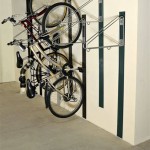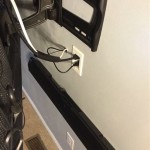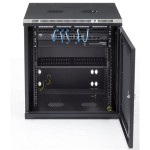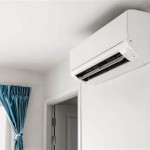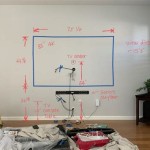The Comprehensive Guide to Wall Mount Outdoor Misting Fans
Outdoor spaces, whether patios, decks, or restaurant terraces, often become less inviting during the hotter months. The stifling heat can deter people from enjoying these areas, impacting comfort and potentially affecting business. A wall mount outdoor misting fan offers a practical solution to combat these high temperatures, providing a localized cooling effect that can significantly enhance the usability of outdoor environments.
Wall mount designs offer a strategic advantage over freestanding models. They conserve valuable floor space, making them suitable for areas where space is limited. Furthermore, their elevated position often allows for better air circulation and wider mist dispersion, maximizing the cooling effect. Before selecting a wall mount outdoor misting fan, it's crucial to understand the various factors that influence performance, durability, and overall suitability for a specific application.
Understanding the Mechanics of Misting Fans
Misting fans work on the principle of evaporative cooling. Water is forced through specialized nozzles at high pressure, creating a fine mist. As this mist evaporates, it absorbs heat from the surrounding air, lowering the temperature. The effectiveness of this process depends on factors such as humidity, air temperature, and the size of the water droplets produced by the nozzles. Lower humidity allows for more rapid evaporation and, consequently, greater cooling.
Different types of misting fans employ various methods to generate the mist. Some use high-pressure pumps, which are generally more efficient and produce finer mists, resulting in superior cooling. Others rely on centrifugal force or lower-pressure systems. The choice of system often depends on the desired level of cooling, the size of the area to be cooled, and the budget.
The size and type of the fan blades also play a role in the overall cooling effect. Larger blades move more air, which aids in the evaporation process and distributes the cooled air over a wider area. The blade design, including the angle and number of blades, influences the airflow pattern and efficiency. Fans designed specifically for misting applications often have blades optimized for dispersing the mist uniformly.
Key Considerations When Choosing a Wall Mount Outdoor Misting Fan
Selecting the right wall mount outdoor misting fan involves careful consideration of several factors. These include the size of the area to be cooled, the level of cooling required, the available water source, the power supply, and the environmental conditions. A thorough assessment of these factors will help ensure that the chosen fan meets the specific needs of the application.
Area Size: The square footage of the area you intend to cool is a primary determinant of the fan's required capacity. A larger space will necessitate a more powerful fan with a higher airflow rate (measured in cubic feet per minute or CFM). Choosing a fan that is undersized will result in inadequate cooling, while an excessively powerful fan may consume more energy than necessary.
Cooling Requirements: The desired temperature reduction will influence the type of misting system needed. For moderate cooling, a low-pressure system may suffice. However, for significant temperature reduction, a high-pressure system is generally more effective. Consider the typical temperature and humidity levels in your area to determine the appropriate cooling capacity.
Water Source: Misting fans require a reliable water source. Determine whether you have access to a direct water line or if you will need to use a portable water tank. Direct water lines provide a continuous water supply, eliminating the need for manual refilling. However, they require plumbing connections. Portable water tanks offer greater flexibility in terms of placement but require periodic refilling.
Power Supply: Ensure that you have a suitable power outlet near the intended mounting location. Check the voltage and amperage requirements of the fan and verify that your electrical system can accommodate them. Some fans are available with different voltage options to suit various electrical systems. If a suitable outlet is not readily available, you may need to install one.
Environmental Conditions: Consider the prevailing weather conditions in your area. If the area is frequently exposed to strong winds, choose a fan with a sturdy construction and a design that minimizes wind interference with the mist. If the area is prone to dust or debris, select a fan with a filter to prevent nozzle clogging. Ultraviolet (UV) exposure can also degrade plastic components, so opt for UV-resistant materials if the fan will be exposed to direct sunlight.
Material and Construction: Durability is paramount for outdoor applications. Look for fans constructed from robust materials such as stainless steel, powder-coated metal, or UV-resistant plastics. These materials can withstand exposure to the elements and resist corrosion. The quality of the motor is also crucial, as it is the heart of the fan. Choose a fan with a sealed motor to protect it from moisture and dust.
Nozzle Quality: The nozzles are a critical component of a misting fan, as they determine the size and consistency of the water droplets. High-quality nozzles are typically made from stainless steel or brass and are designed to resist clogging. They should also be easily replaceable if necessary. Consider the nozzle configuration, as some fans offer adjustable nozzles to control the direction and intensity of the mist.
Installation and Maintenance of Wall Mount Outdoor Misting Fans
Proper installation and regular maintenance are essential for ensuring the optimal performance and longevity of a wall mount outdoor misting fan. Following the manufacturer's instructions carefully during installation will prevent damage to the fan and ensure safe operation. Regular cleaning and maintenance will prevent clogging, corrosion, and other issues that can impair performance.
Installation Procedures: Before beginning the installation process, carefully review the manufacturer's instructions and gather the necessary tools and materials. Ensure that the chosen mounting location is structurally sound and can support the weight of the fan. Use appropriate mounting hardware, such as anchors and screws, to securely attach the fan to the wall. Connect the water supply and power supply according to the instructions, paying close attention to safety precautions. Test the fan to ensure that it is operating correctly before completing the installation.
Cleaning and Maintenance: Regular cleaning is essential for preventing nozzle clogging and maintaining optimal misting performance. Use a soft cloth or brush to remove any dust or debris from the fan blades and housing. Periodically clean the nozzles with a nozzle cleaning tool or by soaking them in vinegar or a descaling solution. Inspect the water filter regularly and replace it as needed. If the fan is not being used for an extended period, drain the water from the system to prevent algae growth and corrosion.
Troubleshooting Common Issues: Some common issues that may arise with wall mount outdoor misting fans include nozzle clogging, low water pressure, and motor malfunctions. Nozzle clogging can often be resolved by cleaning or replacing the nozzles. Low water pressure may be caused by a clogged water filter or a problem with the water supply. Motor malfunctions may require professional repair or replacement. Consult the manufacturer's troubleshooting guide for specific advice on resolving these issues.
Winterization: In regions with freezing temperatures, it is essential to properly winterize the misting fan to prevent damage from freezing water. Disconnect the water supply and drain all water from the system, including the pump, lines, and nozzles. Store the fan in a dry, protected location. Following these winterization steps will help ensure that the fan is ready for use when warmer weather returns.
Safety Precautions: Always follow safety precautions when installing, operating, and maintaining a wall mount outdoor misting fan. Disconnect the power supply before performing any maintenance or repairs. Avoid spraying water directly on electrical components. Keep children and pets away from the fan while it is in operation. Do not use the fan in enclosed or poorly ventilated areas. Inspect the fan regularly for any signs of damage or wear. If you notice any problems, discontinue use and consult a qualified technician.
By considering these factors and following these guidelines, you can select a wall mount outdoor misting fan that will provide years of reliable cooling and enhance the enjoyment of your outdoor spaces.

Twm Mist Fan Wall Mounted 9l

18 Wall Mounted Misting Fan Big Fogg Systems Solutions

Ktw Misting Outdoor Fans Ozmist

Vevor Wall Mount Misting Fan 24 In 3 Speed High Velocity Max 7000 Cfm Waterproof Oscillating Gybgsfsycss24bcvov1 The Home

Continental Dynamics 24 Wall Mounted Misting Fan Outdoor Rated Oscillating 7435 Cfm 1 7 Hp

Outdoor Wall Mount Misting Fans For Tornado Cool Mist Fan

Misting Fan System Outdoor 18 Inch Oscillating High Pressure With Stainless Steel Ring Mistcooling Com

Misting Fan Mc87040 Mistcooling Inc Wall Mounted Axial Stainless Steel

Iliving 14 Inch Wall Mount Outdoor Misting Fan Black 1 City Market

Iliving 18 In 3 Speed Wall Mount Outdoor Waterproof Fan Ilg8e18 15 The Home

